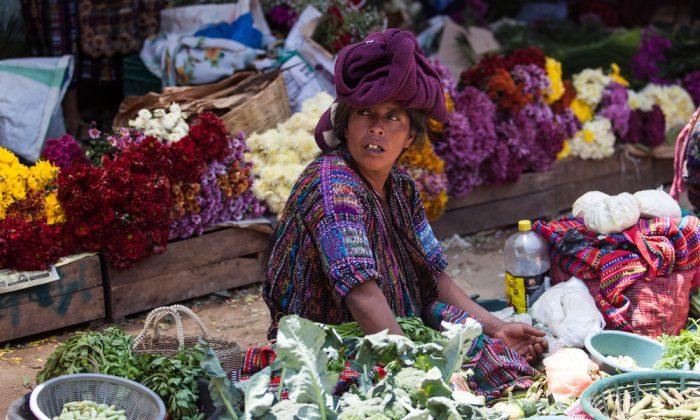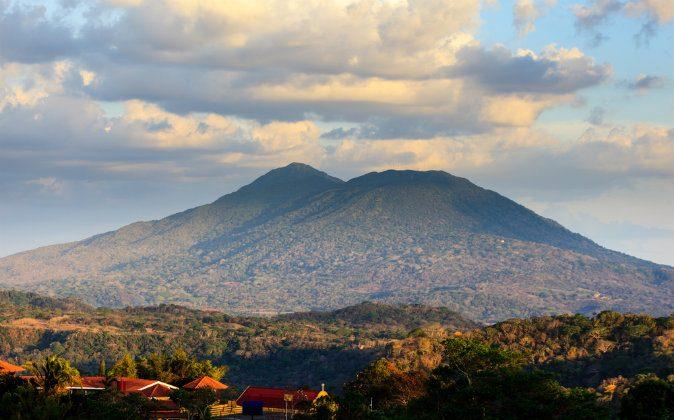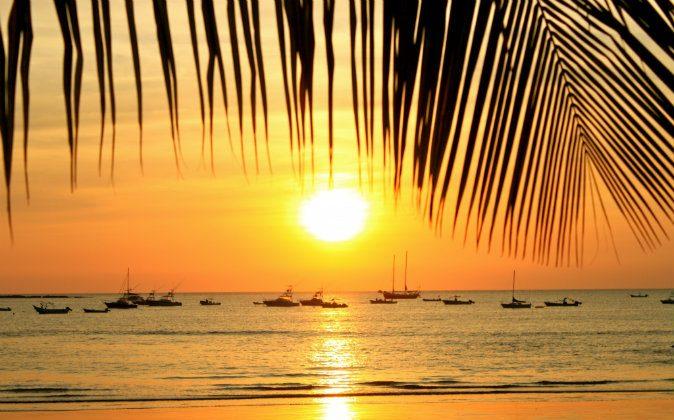Guatemala is without doubt the heart of the Mayan world. With ruins like Tikal and El Mirador, this country has some of the most important and powerful sites of the entire empire. The diversity of the country allows you to explore lush jungle, wildlife, the Caribbean Sea, active volcanos, mythical lakes and colonial towns. Guatemalans are generally friendly and helpful, and if you don’t already know Spanish, the cities of Antigua and around Lake Atitlan offer the cheapest (and most popular) classes in the region.
Top Things to See and Do
- Antigua. The oldest colonial town and probably the most visited city for tourists in Guatemala. It is surrounded by volcanos which you can hike.
- Lake Atitlan. A beautiful highland lake surrounded by three volcanos and indigenous Mayan people. Most popular places to stay are: San Pedro la Laguna, San Marcos and Panajachel.
- Chichicastenango. This is the largest native market in North and Central America. It is open every Tuesday and Sunday, and you can get there from Xela, Antigua and Lake Atitlan with collectivos or chicken busses.
- Todos Santos. In this small mountain town in the Guatemalan highlands, the population is predominantly of Mayan descent. This is one of the only places where indigenous men and women still wear their traditional clothing.
- Semuc Champey. A stunning natural monument that consists of a 300m limestone brigde over the Cahabón River, which is punctuated by stepped, turquoise pools (in which you can swim).
- Tikal. Located in the Peten basin of northern Guatemala, the 222 square mile Tikal National Park is home to some of the greatest archaeological remains of the ancient Mayan civilization.
- Livingston. A small community of the Garifuna People, only accessible by boat.
- Rio Dulce. Popular area to visit because of its scenery and market spot for locals who arrive by canoe.
Best Time to Go
The best time to visit Guatemala is during the dry season from December to March. Peak months are December and January as everything is still green from the rains, but the sky is clear. April is also a good month to visit due to the Semana Santa (Easter) where you will experience processions and the making of alfombras (sacred carpets made out of dyed sawdust, vegetables and flowers).
Keep in mind that government offices, banks, transportation services and stores are closed or reduced on official holidays.
Visa
Guatemala is in a trading agreement with El Salvador, Honduras and Nicaragua, which means that visiting one of these countries gives you a 90-day stay for the entire region. At the moment (March, 2014), most nationalities will get the visa upon arrival. For everyone else, a visa will cost US$25 and needs to be arranged well in advance.
Stay Safe
Guatemala might seem like a peaceful, safe country, but it is not. Apart from the fact that it rates high on the most dangerous country in the world-list, tourists seems to be a prime target for armed robberies, rapes and killings. Highway robberies, where the car is stopped and people in it are stripped of their belongings, as well as hike robberies on volcanos are most common, so use extra caution when doing any of these activities.
If you are hiking one of the Guatemalan volcanos around Lake Atitlan or Antigua, make sure to go on a guided tour in a large group. Hikes to miradors are often escorted by tourist police, so go with them if possible.
Costs
Living expenses in Guatemala are insanely cheap. You can easily live for $30-$40 per day which includes hostel with hot shower and three daily meals.
How to Save Money
- Bargain – but know when. In supermarkets and stores that have price tags on their items you cannot bargain the price down. But in most open markets it’s a mistake not to. Vendors automatically increase the price as soon as they see you are foreign, so never pay full price.
- Buy supplies at the local markets. You can buy vegetables, fruit, bread, cookies, sodas, snacks and much more at local markets in Chichicastenango and Antigua.
- Walk. Most towns in Guatemala are small enough for you to walk around. Save the money for a tuk tuk and take a nice walk instead.
- Take public transportation (chicken busses). Although most buses are in poor shape, it remains the cheap alternative to taxis or flights.
- Eat local. Guatemalan food is both tasty and cheap.
- Buy ’meal of the day'. Throughout Central America, this concept is a cheap and great opportunity to stay within budget.
- Practice your Spanish. If you speak the language, taxi drivers and local vendors are more likely to expect you to bargain – and thus give you a fair price.
Copyright © 2014 by Adventurous Miriam. This article was written by Miriam Risager and originally published on adventurousmiriam.com.
*Image of woman sells vegetables and flowers at traditional weekly market in Chichicastenango via Shutterstock





Friends Read Free